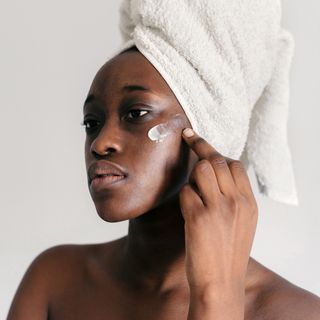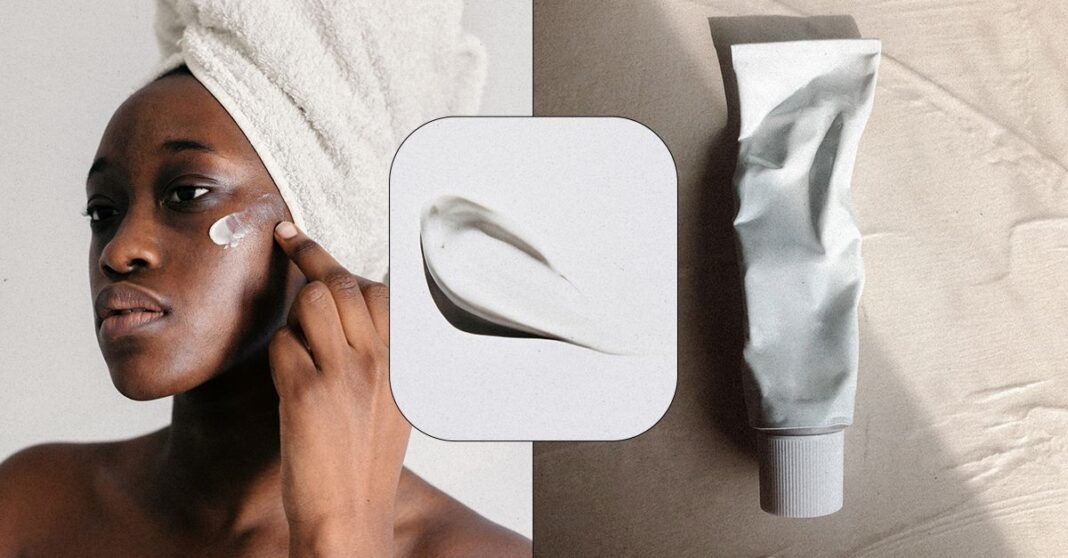As for its anti-acne benefits, know that it’s more about the long game than it is about instant effects. According to Mina Amin, MD, FAAD, a board-certified dermatologist, “it is helpful for acne-prone skin [and] helps prevent new acne” from forming. Tretinoin won’t necessarily clear existing acne, but Amin says it can also help with skin texture and hyperpigmentation.
Blair Murphy-Rose, MD, FAAD, is a leading board-certified cosmetic, medical, and surgical dermatologist at the Laser & Skin Surgery Center of New York. She says tretinoin is a gold-standard acne treatment. “Tretinoin binds to receptors in the skin, which triggers processes that speed up skin cell turnover to help reduce clogged pores and to decrease sebum and oil production—excellent for acne treatment. In fact, most dermatologists recommend a prescription-strength retinoid to their teenage and adult acne patients,” she says.
To sum it up, tretinoin can treat the following skin concerns:
Acne
Wrinkles
Fine Lines
Discoloration
Texture
Enlarged Pores
Loss of Firmness and Elasticity
What skin types is it suitable for? All of the experts say that tretinoin works its magic on all skin types. “[It] tends to be best tolerated by oily or combination skin,” Amin says. The only time it should be avoided entirely is during pregnancy. “Avoid using if pregnant or breastfeeding,” Murphy-Rose warns. “We know that taking high doses of vitamin A by mouth is associated with birth defects. We recommend avoidance of topical forms of vitamin A during pregnancy because we do not have data to suggest that it is safe, and in theory, it may not be safe.”
If you’re not pregnant or breastfeeding, Camp reiterates that tretinoin is generally suitable for all skin types, but oily skin will tolerate it best. “Tretinoin is best tolerated by those with oily, acne-prone skin because of its ability to cause skin dryness, redness, and flaking,” he says. “However, when used cautiously, tretinoin may be tolerated by most skin types. Particularly, sensitive skin may have difficulty getting adjusted to the changes associated with tretinoin use.”
(Image credit: Getty Images)
What are the potential side effects? The potential side effects of tretinoin are no joke. “While it has great benefits, tretinoin is notorious for unwanted side effects like skin irritation, redness, peeling, and increased sun sensitivity,” Murphy-Rose says. While the first three effects can usually be managed by decreasing the frequency or amount of product used, the adjustment stage in which the skin adapts to the retinoid—commonly referred to as the retinization period—is often unavoidable.
“The skin will be more prone to sunburn, dryness, or irritation, especially during the first two to three weeks,” Amin says. This is because it stimulates cell turnover, which causes the skin cells to slough off faster than they would normally.
Murphy-Rose says the length of the retinization period will differ according to your skin type, the strength of the tretinoin, the amount used, and the frequency with which you use it. “Classically, this takes about two weeks, but it will vary among individuals,” she says.
2. Purging should be expected—don’t dramatically increase or decrease usage.
As if that’s not enough, it can cause a temporary increase in acne, which is known as purging. “It can cause some increase in acne—also known as a purging stage—at the beginning, which tends to improve with time,” Amin says. Usually, it lasts a few weeks, so be prepared, and don’t automatically stop using it if you see more breakouts appear. On the flip side, don’t start using more of the product to minimize said breakouts. “Like most acne prescriptions, tretinoin should be used for two to three months before deciding if it is helpful or not,” Camp says.
How should I incorporate it into my skincare routine? 3. Incorporate it into your skincare routine slowly.
The experts recommend starting slow. “To limit irritation, try to develop a tolerance to the medication gradually,” Camp says. “Consider applying a pea-sized amount to the face once every third night for one month, then every other night for one month, then nightly as tolerated. Apply a gentle moisturizer to the skin afterward, or consider mixing the medication and the moisturizer together to dilute the tretinoin.”
Murphy-Rose recommends being intentional about where you place the tretinoin on your face. “Spare the eyelids and corners of the nose and lips where more product can accumulate and cause excess irritation near mucosal surfaces,” she says. “Moisturize well while using tretinoin. I generally recommend applying your moisturizer after tretinoin. If you are struggling to tolerate tretinoin and have tried these tips, you can try the sandwich method.”
What is the sandwich method, you ask? Amin recommends those with sensitive skin use it to mitigate the drying and irritating effects of tretinoin. Start by applying moisturizer, then apply the retinoid, then apply moisturizer again. It creates a protective barrier for the skin and helps keep sensitivity at bay.
(Image credit: Andy Skye)
4. Apply it only at night, and use sunscreen during the day.
Oh, tretinoin, like all retinoids, should only be applied at night. That’s because it increases photosensitivity aka the skin’s susceptibility to UV rays. “The skin will be more sensitive to the sun when you’re using tretinoin even though you’re applying it at night,” Amin says. “Therefore, it is important to wear sunscreen during the day.”
Shop 8 of the Best Over-the-Counter Retinoids Since tretinoin is only available by prescription, we asked the experts to share some of their favorite over-the-counter retinoids. As Amin puts it, “Tretinoin is more effective than over-the-counter retinoids, but over-the-counter retinoids have great skincare benefits as well.”
La Roche-Posay
Effaclar Adapalene Gel 0.1% Acne Treatment
“Adapalene used to be a prescription, but now, it’s available over the counter,” Amin says. It’s particularly effective as a topical acne treatment. Camp recommends it too. “Marketed for acne, this product contains adapalene, which has been found to be helpful for addressing changes related to photoaging, such as fine lines, wrinkles, and dark spots,” he says.
The Ordinary
Granactive Retinoid 2% Emulsion
SkinCeuticals
Retinol 0.5
Experts and editors alike love SkinCeuticals. “Available in three different concentrations, this OTC retinol night cream is appropriate for novice, experienced, and expert users,” Camp says.
Paula’s Choice
Clinical Anti-Aging 1% Retinol Treatment
Differin
Acne Treatment Gel Adapalene 0.1%
Farmacy
1% Vitamin A Retinol Serum
An editor-favorite formula, this retinol is powerful and effective.
Shani Darden Skin Care
Retinol Reform Treatment Serum
Dr. Dennis Gross Skincare
Advanced Retinol + Ferulic Triple Correction Eye Serum
Camp recommends this retinol-infused eye serum: “Retinol and plant-based bakuchiol—thought to be as effective as retinol but better tolerated—are features in this eye serum to address fine lines and wrinkles in the periocular area.”
Unmatched Baby Essentials


